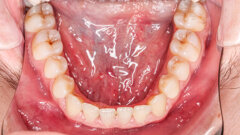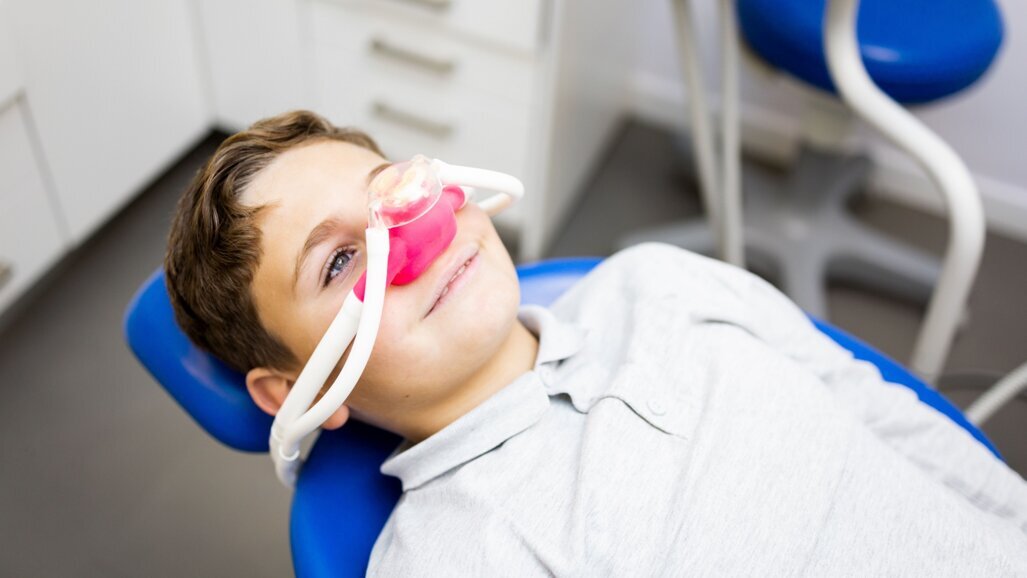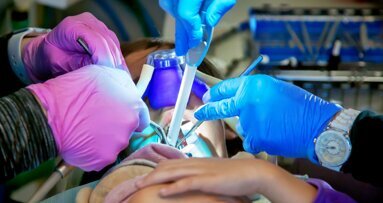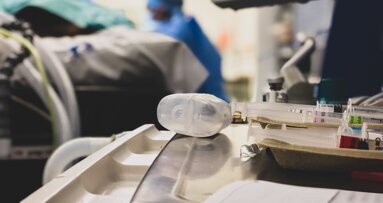LEEDS, England: Dentistry is a significant contributor to carbon emissions, and in the UK, dental services provided through the National Health Service (NHS) account for 3% of NHS England’s total carbon footprint. A significant portion of the UK adult population suffers from moderate to severe dental anxiety, and inhalation sedation with nitrous oxide allows them to receive necessary dental care. Nitrous oxide, however, is a potent greenhouse gas. A new study has explored evidence-based ways to balance a clinician’s ability to care for patients and a practice’s impact on the environment in using nitrous oxide.
Nitrous oxide has nearly 300 times the global warming potential of carbon dioxide. The use of nitrous oxide during a dental procedure can significantly increase that procedure’s carbon footprint, up to the equivalent of driving a petrol car 1,366 km. However, the current alternatives to nitrous oxide for conscious sedation in the UK are limited, and professional bodies advocate its continued use while urging consideration of its environmental impact.
To mitigate the environmental effects of nitrous oxide, the article suggests several strategies for clinicians and those involved in procuring and managing the gases needed for sedation. First, in order to improve the efficiency of nitrous oxide use, clinicians can reduce the amount of nitrous oxide used without compromising patient care by optimising gas delivery to the lungs, using titrated sedation for the shortest time necessary and ensuring that equipment is well maintained to prevent leaks. Notably, piped gas systems in hospitals can lose up to 95% of the nitrous oxide owing to leakage, which could be mitigated by switching to portable cylinders.
Second, a new technology, nitrous oxide cracking, is being trialled to break down exhaled nitrous oxide into non-greenhouse gases. Although this technology is not yet widely adopted, it shows promise in reducing emissions from sedation.
Third, alternatives to pharmacological interventions, such as cognitive behavioural therapy, should be prioritised when appropriate. These methods have a minimal environmental impact and can effectively manage anxiety in many cases.
Fourth, the article makes suggestions regarding the holistic reduction of the environmental impact of sedation services. Since patient and staff travel contribute significantly to the carbon footprint, telemedicine can be employed to reduce unnecessary journeys and optimise patient pathways, and sustainable modes of travel can be encouraged. Simple changes, such as proper waste management, recycling, reducing paper use and implementing energy-efficient systems, can collectively have a substantial impact on reducing the carbon footprint of sedation services.
Looking towards the future, the researchers discussed potential alternatives to nitrous oxide, such as methoxyflurane and sevoflurane. Both gases have a lower global warming potential but require further research to establish their safety and effectiveness in dental settings.
The study makes it clear that, while nitrous oxide currently remains essential for managing dental anxiety, there are numerous ways to minimise its environmental impact. As healthcare professionals increasingly recognise their role in combating climate change, adopting sustainable practices within sedation services is crucial to achieving the NHS’s goal of reaching carbon-neutral status by 2040.
The study, titled “Climate-conscious sedation: How can we sustainably manage dental anxiety using inhalation sedation?”, was published on 26 July 2024 in the British Dental Journal.
Topics:
Tags:
Dental fear is estimated to affect nearly one-third of adults globally, and the condition leads to avoidance of dental visits and has negative implications ...
VICTORIA, British Columbia, Canada: Trauma is an emotional response caused by certain past events that have caused great distress in individuals. Since ...
Carrying on the conversation from the first part on the ongoing fight for improved safety in anaesthesia in dentistry, Dental Tribune International again ...
Last April, Dental Tribune International first spoke with Drs Rita Agarwal and James Tom, paediatric anaesthesiologist and dentist anaesthesiologist, ...
RIYADH, Saudi Arabia: Every dental clinician in the world will, at some point, treat a patient with a form of mental disability, and according to recent ...
Live webinar
Mon. 12 January 2026
9:00 am EST (New York)
Prof. Judith Jones D.D.S; M.P.H., Prof. Kakuhiro Fukai D.D.S., Ph.D, Dr. Bathsheba (Bethy) Turton
Live webinar
Wed. 14 January 2026
12:00 pm EST (New York)
Dr. Théo Laplane, Dr. Robert Gottlander DDS
Live webinar
Fri. 16 January 2026
12:00 pm EST (New York)
Live webinar
Mon. 19 January 2026
1:00 pm EST (New York)
Philipp Kopp, Michael Seeber
Live webinar
Thu. 22 January 2026
2:00 pm EST (New York)
Dr. Nicola M. Grande DDS, PhD
Live webinar
Wed. 28 January 2026
8:00 am EST (New York)
Live webinar
Wed. 28 January 2026
11:00 am EST (New York)
Prof. Dr. Jan-Frederik Güth



 Austria / Österreich
Austria / Österreich
 Bosnia and Herzegovina / Босна и Херцеговина
Bosnia and Herzegovina / Босна и Херцеговина
 Bulgaria / България
Bulgaria / България
 Croatia / Hrvatska
Croatia / Hrvatska
 Czech Republic & Slovakia / Česká republika & Slovensko
Czech Republic & Slovakia / Česká republika & Slovensko
 France / France
France / France
 Germany / Deutschland
Germany / Deutschland
 Greece / ΕΛΛΑΔΑ
Greece / ΕΛΛΑΔΑ
 Hungary / Hungary
Hungary / Hungary
 Italy / Italia
Italy / Italia
 Netherlands / Nederland
Netherlands / Nederland
 Nordic / Nordic
Nordic / Nordic
 Poland / Polska
Poland / Polska
 Portugal / Portugal
Portugal / Portugal
 Romania & Moldova / România & Moldova
Romania & Moldova / România & Moldova
 Slovenia / Slovenija
Slovenia / Slovenija
 Serbia & Montenegro / Србија и Црна Гора
Serbia & Montenegro / Србија и Црна Гора
 Spain / España
Spain / España
 Switzerland / Schweiz
Switzerland / Schweiz
 Turkey / Türkiye
Turkey / Türkiye
 UK & Ireland / UK & Ireland
UK & Ireland / UK & Ireland
 Brazil / Brasil
Brazil / Brasil
 Canada / Canada
Canada / Canada
 Latin America / Latinoamérica
Latin America / Latinoamérica
 USA / USA
USA / USA
 China / 中国
China / 中国
 India / भारत गणराज्य
India / भारत गणराज्य
 Pakistan / Pākistān
Pakistan / Pākistān
 Vietnam / Việt Nam
Vietnam / Việt Nam
 ASEAN / ASEAN
ASEAN / ASEAN
 Israel / מְדִינַת יִשְׂרָאֵל
Israel / מְדִינַת יִשְׂרָאֵל
 Algeria, Morocco & Tunisia / الجزائر والمغرب وتونس
Algeria, Morocco & Tunisia / الجزائر والمغرب وتونس
 Middle East / Middle East
Middle East / Middle East











































To post a reply please login or register